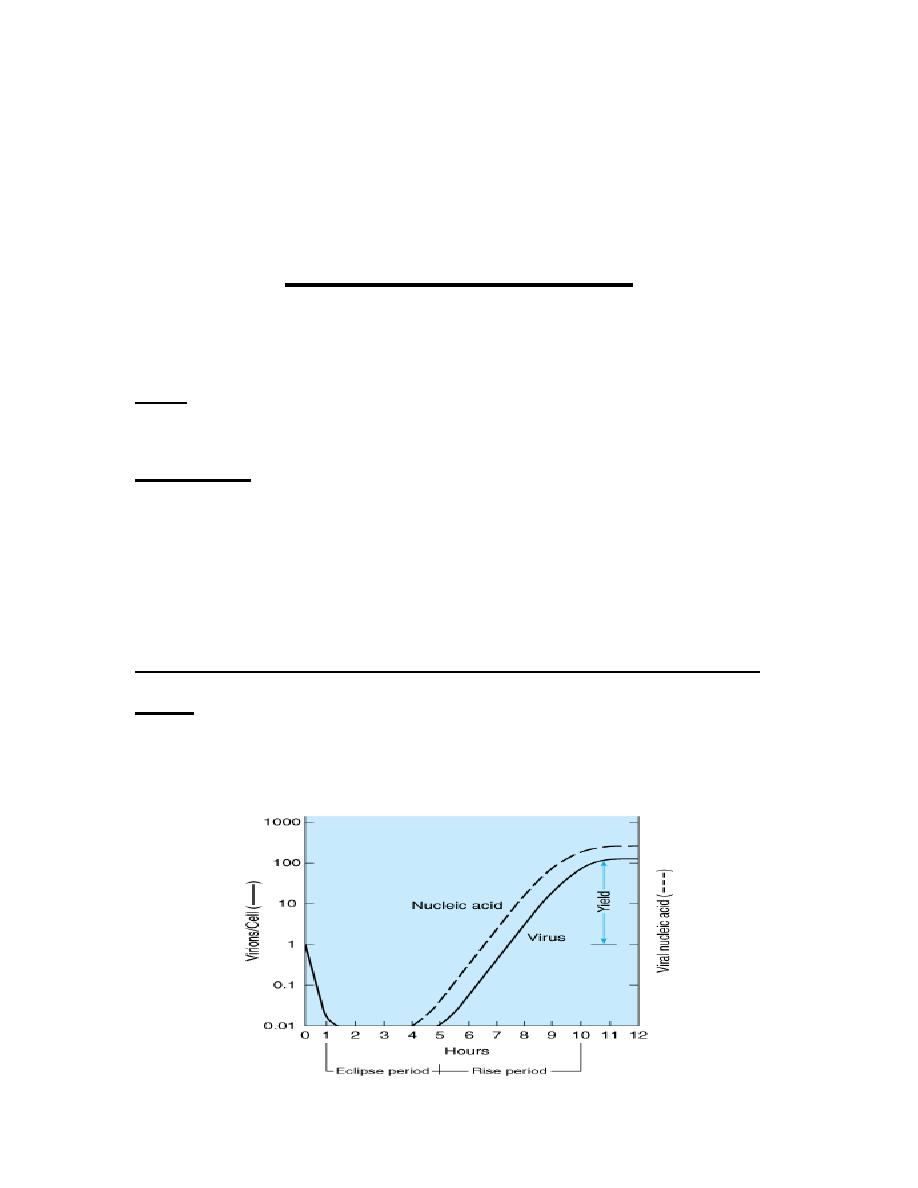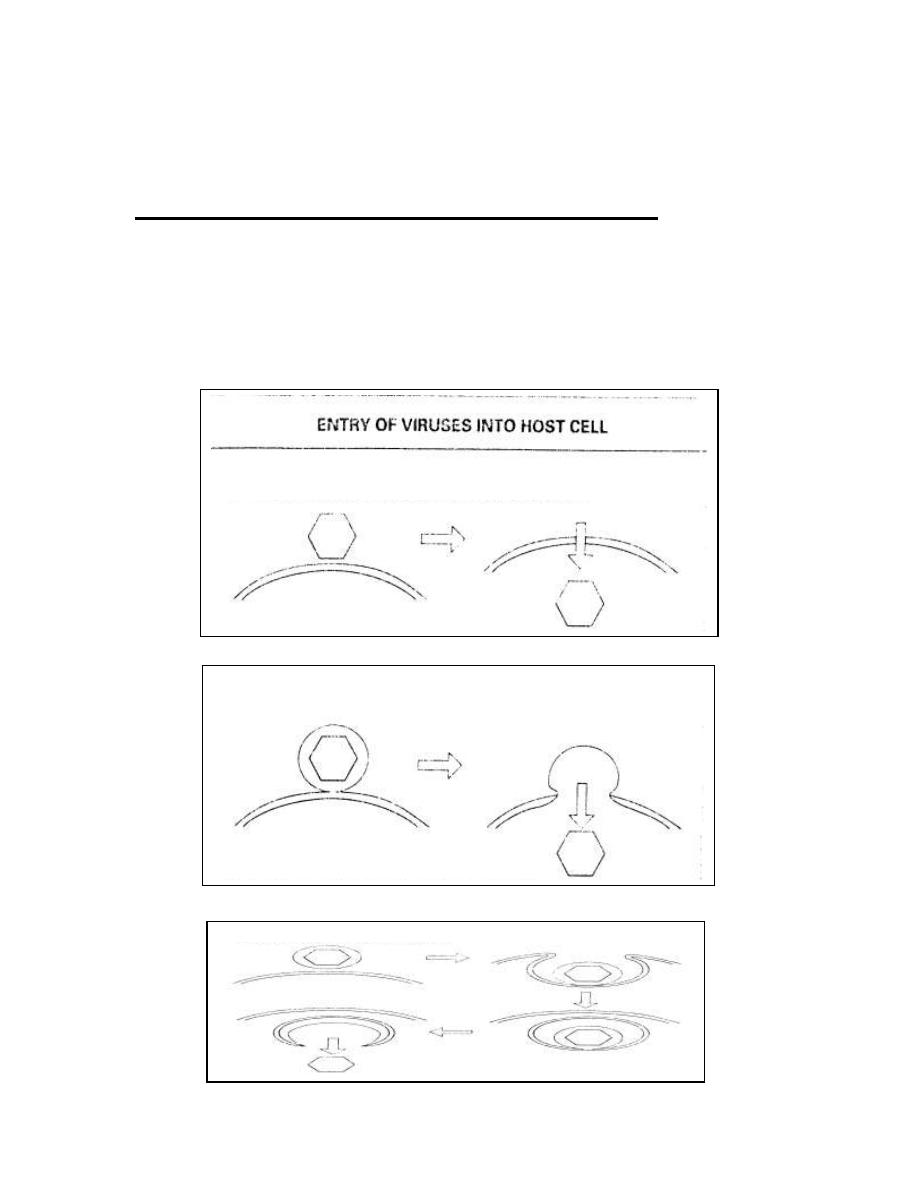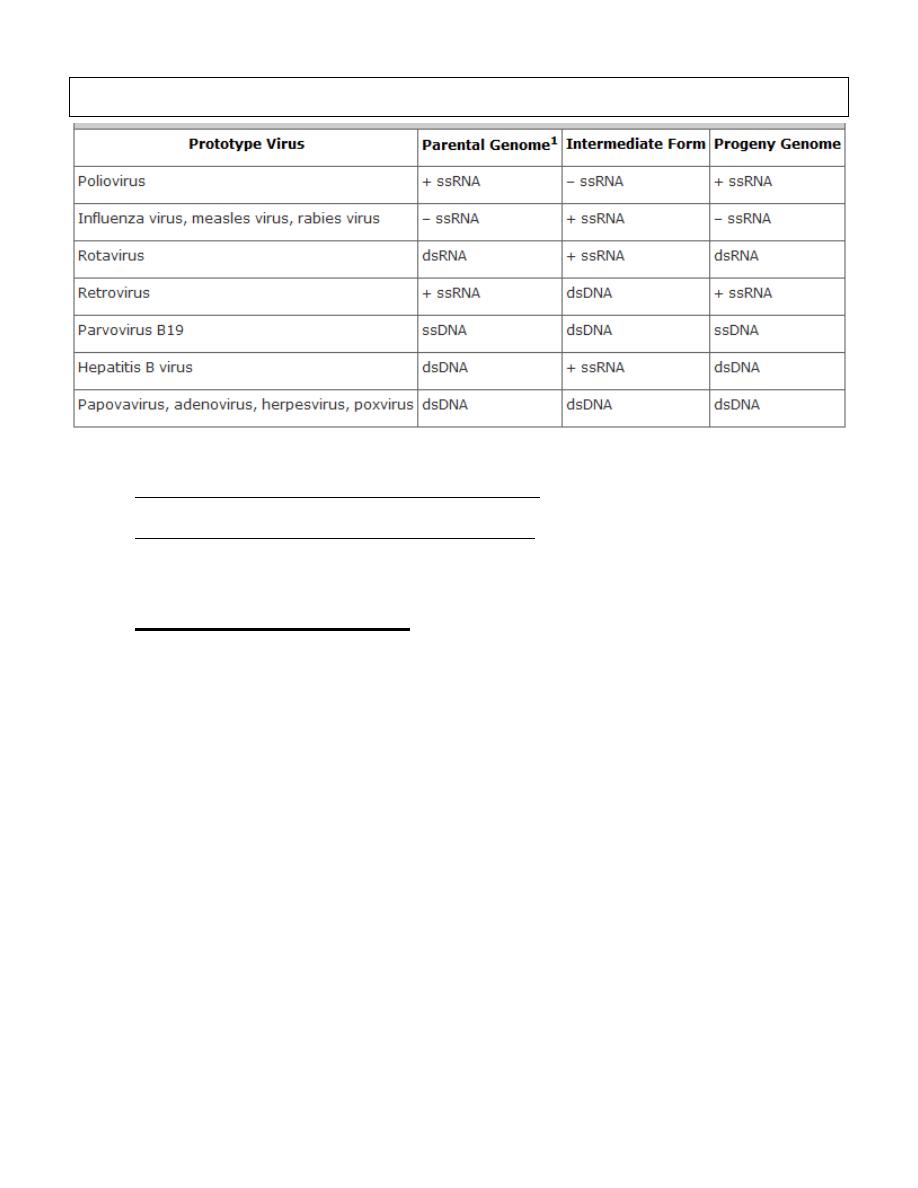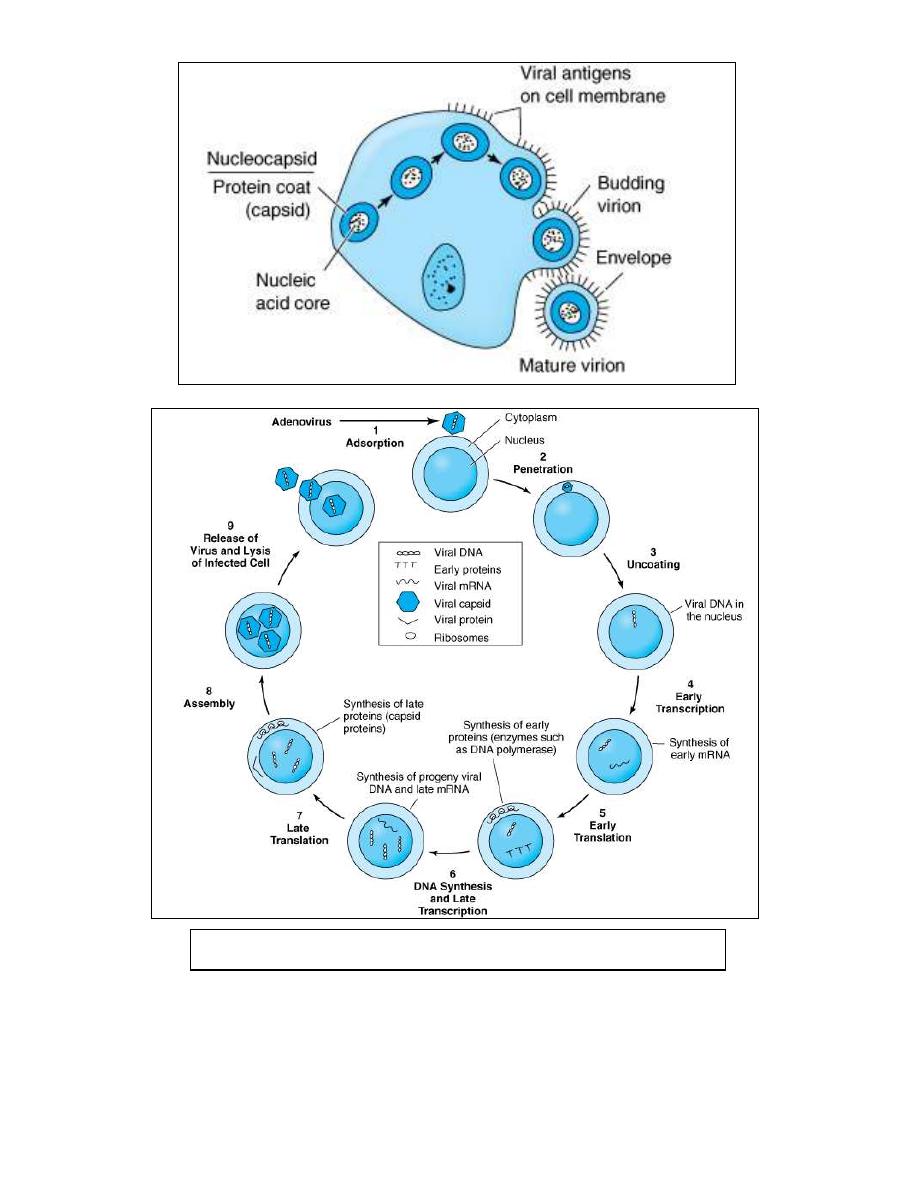
1
Replication of viruses
An overview
Aim:
Study the general steps in viral replication cycles.
Objectives:
1. Viral growth curve
2. Stepwise description of specific events during virus growth
3. Atypical viruses
The viral replication cycle is described below in two different
ways:
1. Growth curve, which shows the amount of virus produced at
different times after infection.
.أ
د
.
فائزة عبذ اهلل مخلص
Lec. 2

2
2. Stepwise description of the specific events within the cell during
virus growth:
Attachment, penetration, and uncoating:
1. Attachment or interaction of a virion with a specific receptor site
on the surface of a cell.
2. Penetration:
A. Direct translocation across cell membrane.
B.
Fusion of viral envelope and cell membrane
C.
Engulfed in a pinocytotic vesicle

3
3. Uncoating
Gene expression and genome replication
:
Early viral mRNA synthesis (transcription)
A. DNA viruses:
Replicate in the nucleus and use the host cell DNA-dependent RNA
polymerase to synthesize their mRNA.
The poxviruses are the exception because they replicate in the cytoplasm.
They carry their own polymerase within the virus particle.
The genome of all DNA viruses consists of double-stranded (ds) DNA,
except for the parvoviruses, which have a single-stranded (ss) DNA genome.
B. RNA viruses:
Fall into four groups with quite different strategies for synthesizing mRNA.
1. Single- stranded RNA of positive polarity.
These viruses use their RNA genome directly as mRNA (e.g. Poliovirus).
2. Single- stranded RNA of negative polarity.
An mRNA must be transcribed by using the negative strand as a template.
The virus carries its own RNA- dependent RNA polymerase (e.g. Influenza
virus).
-ve sense
+ve sense RNA
( mRNA)

4
3. Double- stranded RNA:
The virus carries its own polymerase for transcribing into
mRNA (e.g. Reovirus).
4. Single- stranded RNA of positive polarity :
The RNA transcribed into double- stranded DNA by the RNA-
dependent DNA polymerase (reverse transcriptase), carried by
the virus. This DNA copy is then transcribed into viral mRNA
by the regular host cell RNA polymerase. (e.g. Retroviruses).
+ve sense RNA
-ve sense DNA
+ve sense strand
transcribed by viral
reverse transcriptase
.
+ve
-ve
+ve sense RNA
( mRNA)
-ve ds DNA
+ ve
-ve sense strand transcribed by host cell polymerase into mRNA
Enters the nucleus &
integrated into host
genome.

5
Most RNA viruses undergo their entire replication cycle in
cytoplasm. The two principle exceptions are retroviruses and
influenza viruses, both of which have an important replication step
in the nucleus.
Early viral proteins synthesis (Translation):
Once the viral mRNA of either DNA or RNA viruses is
synthesized, it is translated by host cell ribosomes into viral
proteins. Some of which are early proteins, i.e. enzymes required
for replication of viral genome, and others of which are late
proteins, i.e. structural proteins of the progeny viruses.
Early proteins: occurring before the replication of the genome.
Late proteins: occurring after genome replication.
The most important of the early proteins for many RNA viruses
is the polymerase that will synthesize many copies of viral genetic
material for the progeny virus particles. Most viruses make a virus
encoded- polymerase that replicates the genome.
Replication of viral genome (complementarity):
Replication of the viral genome is governed by the principle of
complementarity, which requires that a strand with a
complementary base sequence be synthesized; this strand then
serves as the template for the synthesis of actual viral genome.

6
Late viral mRNA synthesis (transcription)
Late viral proteins synthesis (translation):
Capsid proteins
Assembly and release
:
The progeny particles are assembled by packaging the viral nucleic
acid within the capsid proteins.
Virus particles are released from the cell by either of two
processes:
1. Rupture of the cell membrane and release of the mature
particles (unenveloped viruses).
2. Budding through the outer cell membrane (enveloped
viruses).
Replication of viral genome (complementarity)

7
The Growth cycle DNA virus

8
The growth cycle of RNA virus

9
Atypical virus like agents:
1. Defective viruses are composed of viral nucleic acid and
proteins. Viruses usually have a mutation or a deletion of part
of their genetic material.
2. Pseudovirions: contain host cell DNA instead of viral DNA
within the capsid.
3. Viroids: Consist solely of a single molecule of circular RNA
without a protein coat or envelope.
4. Prions: are infectious particles that are composed solely of
protein. No detectable nucleic acid.
They are implicated as the cause of certain “slow” diseases
called transmissible spongiform encephalopathies :
Creutzfeldt-Jakob disease in humans.
Scrapie in sheep
The term spongiform refers to the sponge-like appearance of
the brain seen in these diseases. The holes of the sponge are
vacuoles resulting from dead neurons.
Prion proteins are encoded by a cellular gene. When these
proteins are in normal configuration, they are non pathogenic, but
when their configuration changes, they aggregate into filaments,
which disrupts neuronal function and results in the symptoms of
disease.

10
Prions are highly resistant to inactivation by UV light, heat, they
are remarkably resistant to formaldehyde and nucleases. They are
inactivated by hypochlorite, NaOH, and autoclaving.
Prions transmitted by human growth hormone and neurosurgical
instruments.
Because they are normal human proteins, they do not elicit an
inflammatory response or an antibody response in humans.
Bovine spongiform encephalopathy
“Mad cow” disease. Cattle eating brains obtained from sheep
infected with scrapie prions.
Ref.
Jawetz , Medical Microbiology 25
th
edition /2010
